Abstract
The success of biological wastewater treatment is to a large extent governed by the ability of bacteria to induce floc formation, thereby facilitating the separation of particles from the treated water. We performed studies on the dynamics of floc stability, the desorption of cells from the flocs, and the reflocculation of detached material. The floc stability was affected by the ionic strength of the medium in a way that strongly suggests that the interactions between the floc components can be explained by the theory of Derjaugin, Landau, Verwey, and Overbeek (DLVO theory). At increasing concentrations of electrolytes, the stability of the flocs increased. However, above an ionic strength of about 0.1 the floc stability decreased, and it seems that at this high electrolyte concentration the DLVO theory cannot be applied. The reversibility of the electrostatic double-layer effects was experimentally shown by treating the sludge repeatedly with a low-ionic-strength solution until parts of the flocs detached. When salt was added at this point, flocs re-form, resulting in a dramatic decrease in the turbidity of the supernatant liquid. Both reflocculation and detachment of floc material were seen with calcium as well as with potassium. This finding clearly indicates that the reflocculation and destabilization of flocs were due to changes in double-layer thickness rather than bridging effects of multivalent ions such as calcium. The results indicate that the ionic strength may well be an important factor for the floc stability in wastewater in situ.
Full text
PDF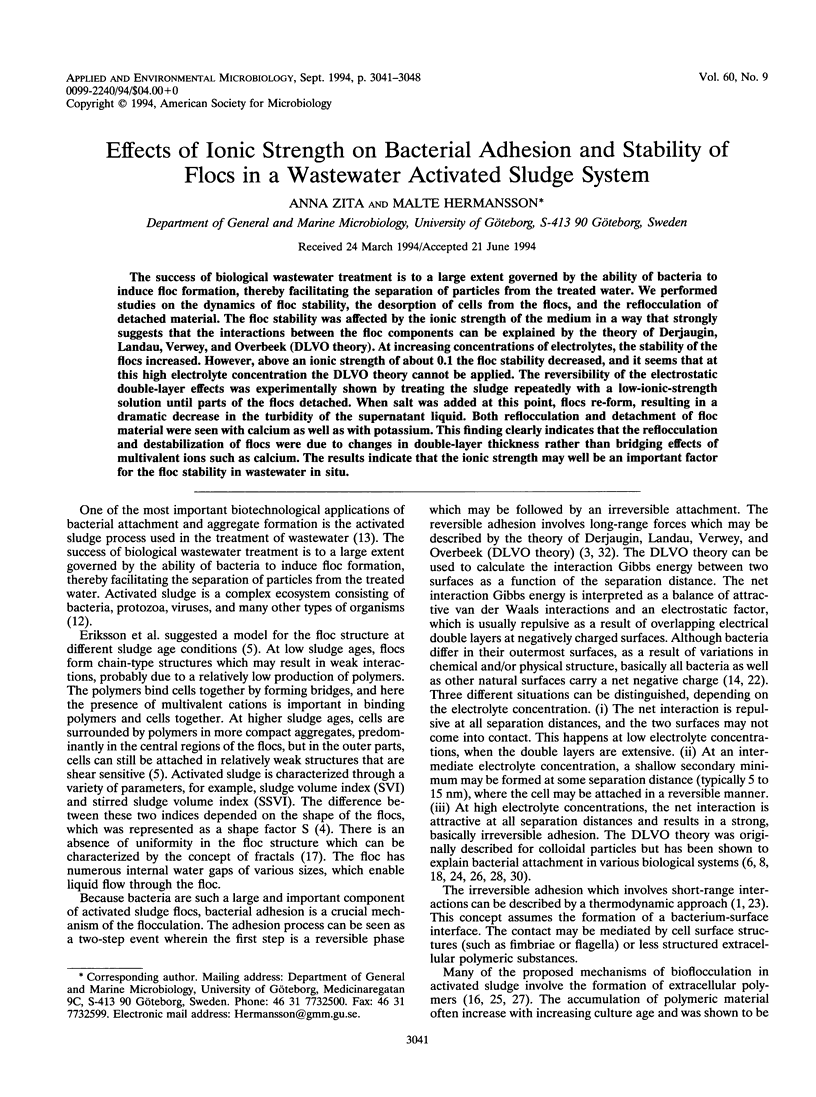
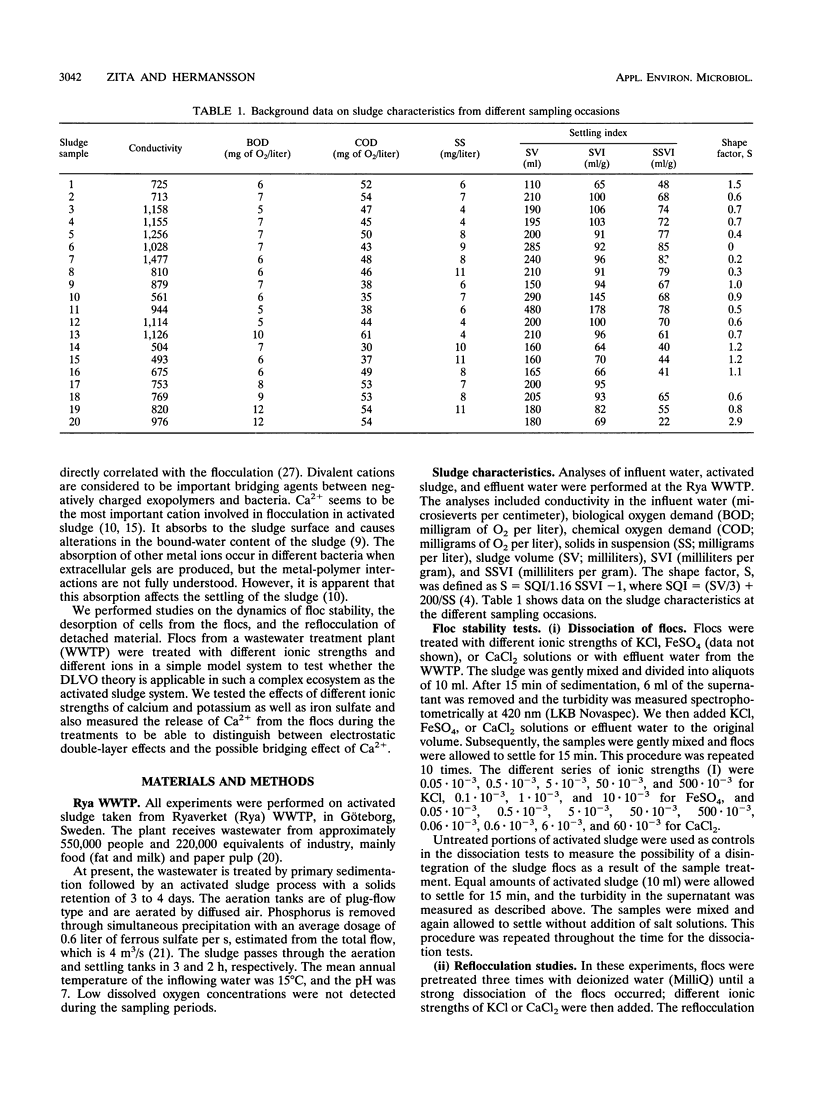
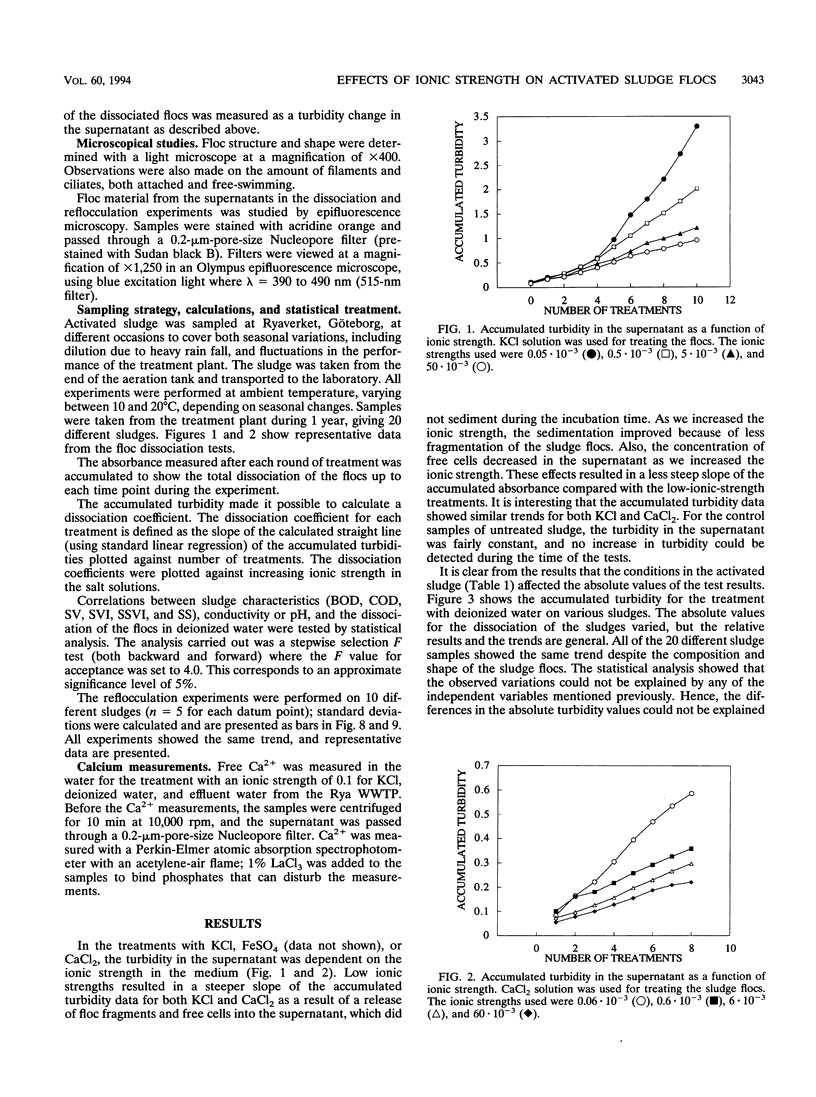
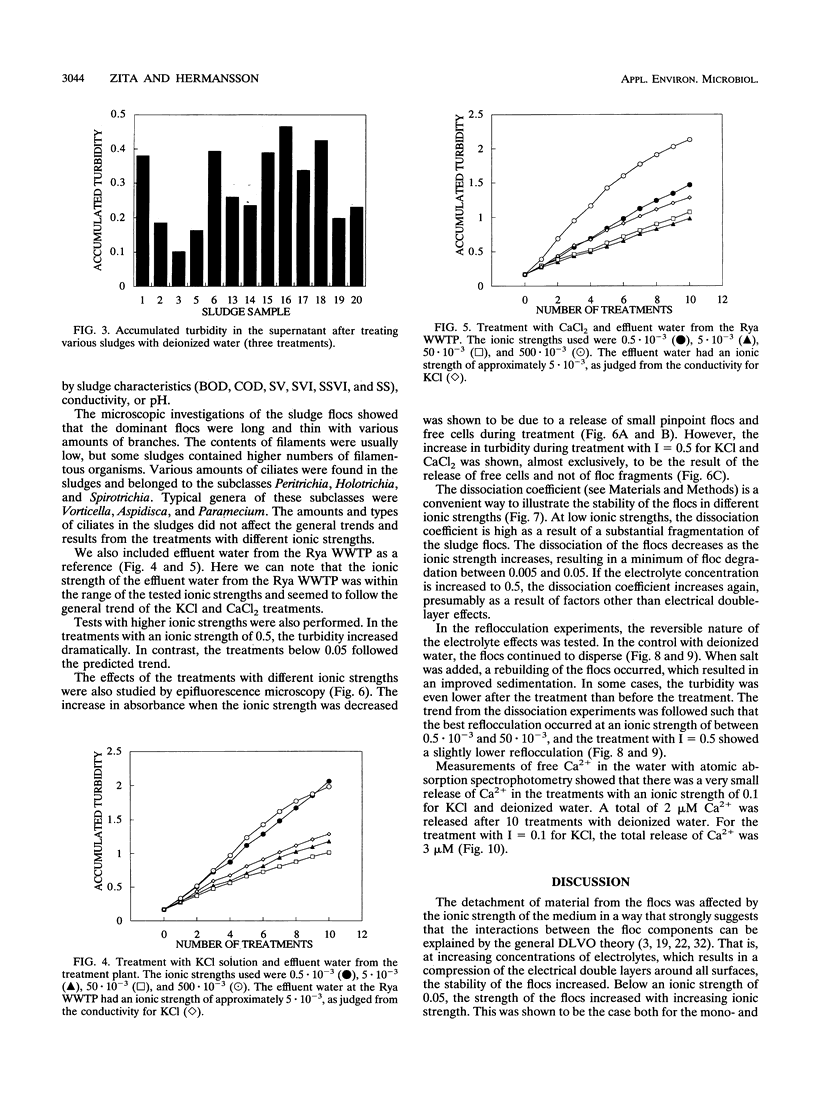
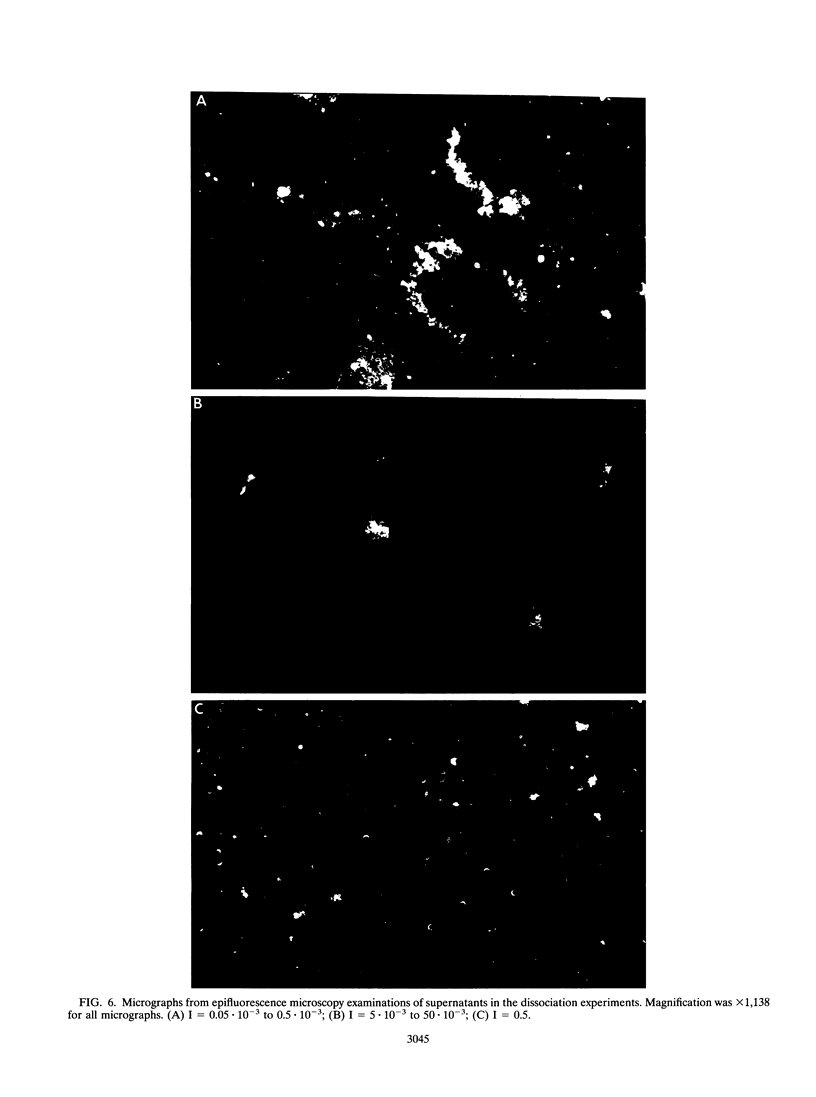
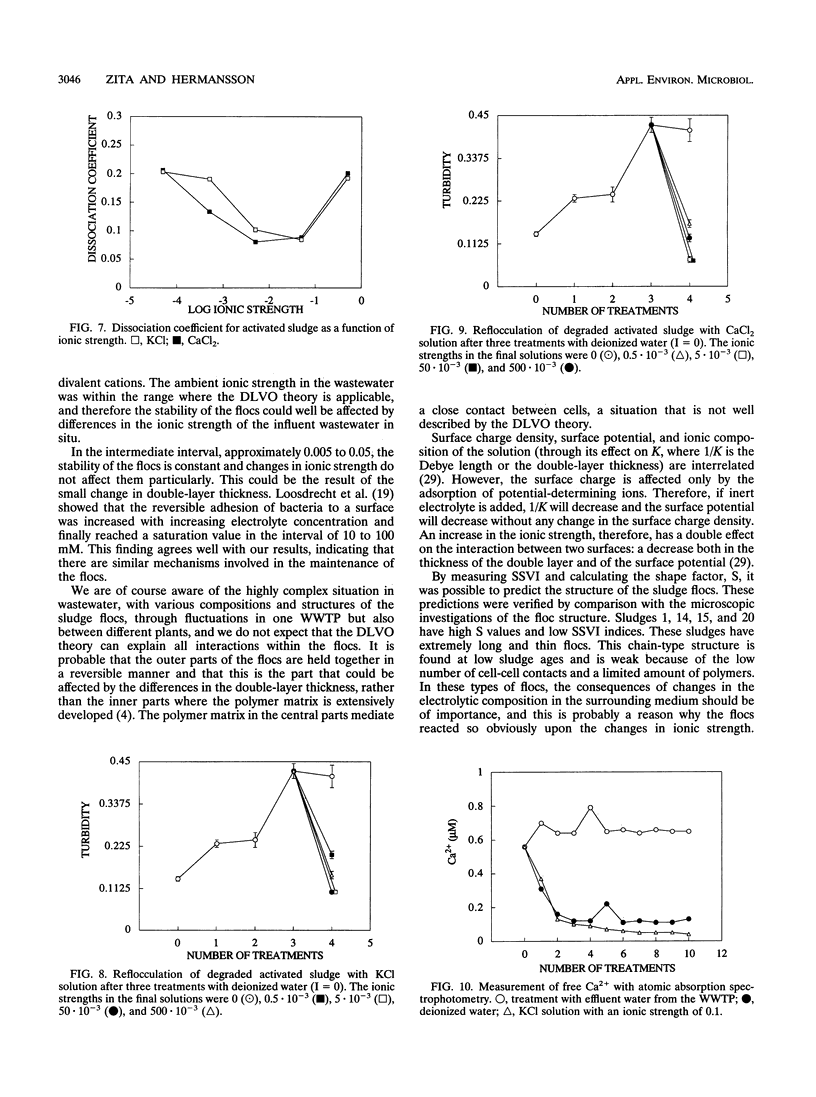
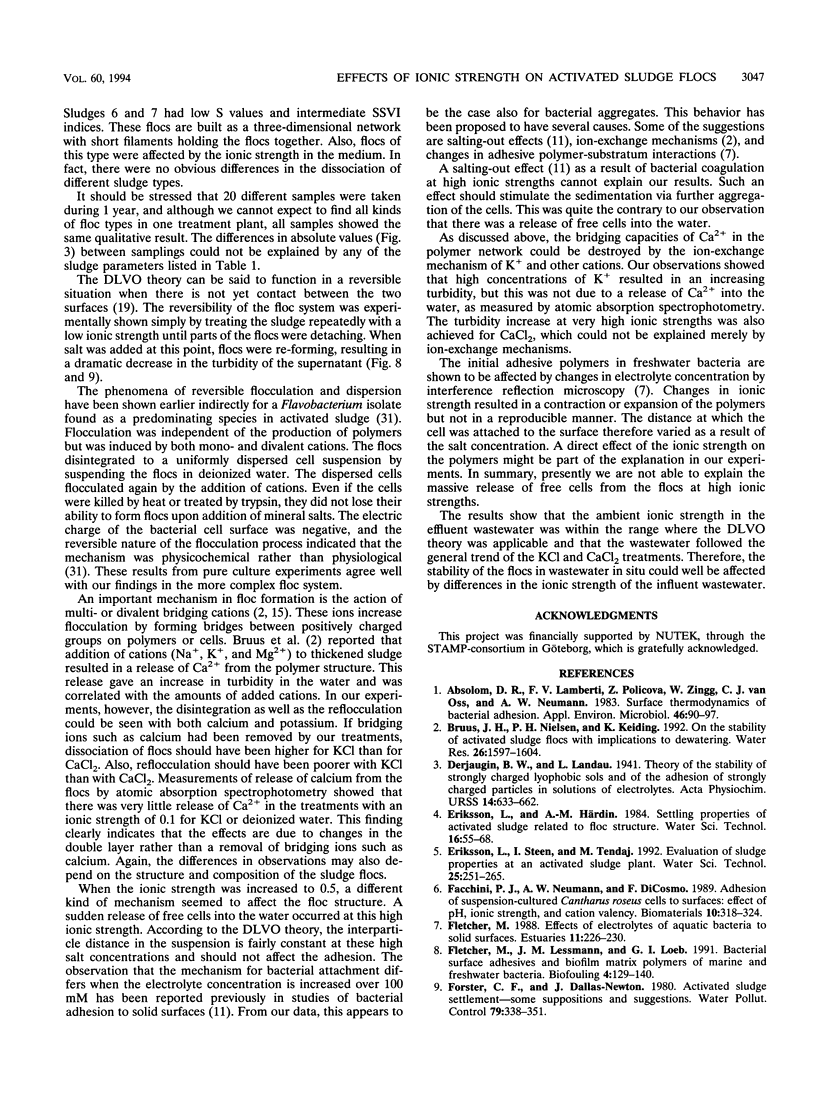
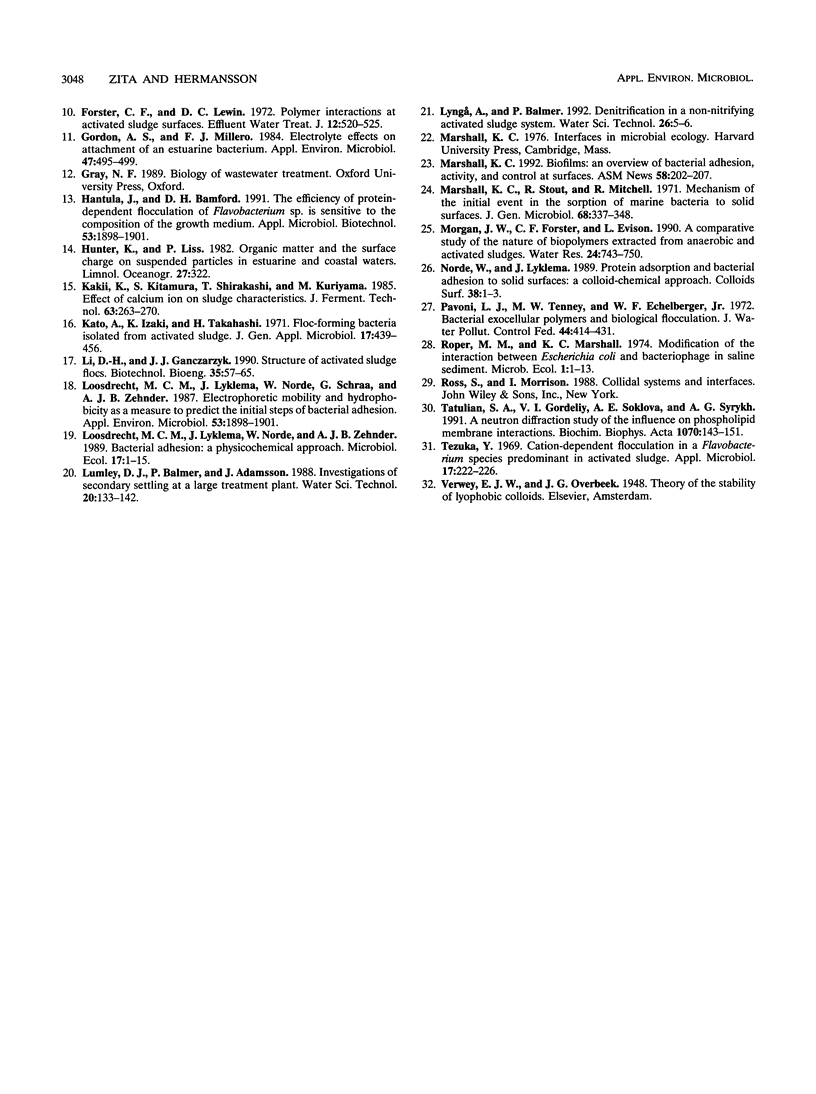
Images in this article
Selected References
These references are in PubMed. This may not be the complete list of references from this article.
- Absolom D. R., Lamberti F. V., Policova Z., Zingg W., van Oss C. J., Neumann A. W. Surface thermodynamics of bacterial adhesion. Appl Environ Microbiol. 1983 Jul;46(1):90–97. doi: 10.1128/aem.46.1.90-97.1983. [DOI] [PMC free article] [PubMed] [Google Scholar]
- Facchini P. J., Neumann A. W., DiCosmo F. Adhesion of suspension-cultured Catharanthus roseus cells to surfaces: effect of pH, ionic strength, and cation valency. Biomaterials. 1989 Jul;10(5):318–324. doi: 10.1016/0142-9612(89)90072-0. [DOI] [PubMed] [Google Scholar]
- Gordon A. S., Millero F. J. Electrolyte effects on attachment of an estuarine bacterium. Appl Environ Microbiol. 1984 Mar;47(3):495–499. doi: 10.1128/aem.47.3.495-499.1984. [DOI] [PMC free article] [PubMed] [Google Scholar]
- Pavoni J. L., Tenney M. W., Echelberger W. F., Jr Bacterial exocellular polymers and biological flocculation. J Water Pollut Control Fed. 1972 Mar;44(3):414–429. [PubMed] [Google Scholar]
- Tatulian S. A., Gordeliy V. I., Sokolova A. E., Syrykh A. G. A neutron diffraction study of the influence of ions on phospholipid membrane interactions. Biochim Biophys Acta. 1991 Nov 18;1070(1):143–151. doi: 10.1016/0005-2736(91)90156-3. [DOI] [PubMed] [Google Scholar]
- Tezuka Y. Cation-dependent flocculation in a Flavobacterium species predominant in activated sludge. Appl Microbiol. 1969 Feb;17(2):222–226. doi: 10.1128/am.17.2.222-226.1969. [DOI] [PMC free article] [PubMed] [Google Scholar]
- van Loosdrecht M. C., Lyklema J., Norde W., Schraa G., Zehnder A. J. Electrophoretic mobility and hydrophobicity as a measured to predict the initial steps of bacterial adhesion. Appl Environ Microbiol. 1987 Aug;53(8):1898–1901. doi: 10.1128/aem.53.8.1898-1901.1987. [DOI] [PMC free article] [PubMed] [Google Scholar]



